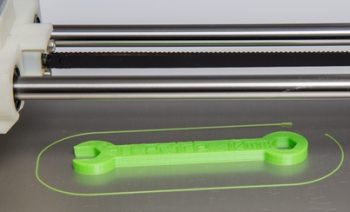
3D printing has been around for a while now but has only recently come to the forefront of our TV screens and businesses in the last few years as advancements in technology have paved the way for dramatic changes in businesses across the world.
The 3D printing process is quite ingenious, in which three dimensional solid objects are created from a digital output (on your laptop or desktop computers using a software package such as CAD). The process works by breaking down a 3D model into layers until a full 3D copy has been made.
For precision engineers the 3D printing revolution is starting and it’s making waves across the globe. In particular the metal 3D printing devices have boomed in popularity as of late because of the potential and opportunities that each one can offer to whatever industry you may be in. This type of 3D printing device can be used in many industries across the world to help make anything from implants that can be used in dentistry right through to maxillofacial surgery, changing the way we work for the better.
Why is Precision Engineering so Important?
3D printing has a range of practical uses and can help create even the most complicated of objects with its details, and highly accurate prototype process. Precision engineering is one of the major key influences behind all industrial technology that we see and use, whether its computers, cars or other pioneering inventions and devices.
To be able to take precision engineering and then incorporate that into 3D printing will revolutionise many industries and provide a low cost way of replicating objects over and over again.
As one example of precision engineering, we can take the modern day car. Most of us have access to one and the complexity behind where each component is placed comes down to precision engineering. One slightly out of place element and the car would be rendered useless, so knowing where to measure the engine to is paramount and more often than not is measured in microns (that’s how precise we are talking here). Keep in mind that there are over 25,000 microns in just one inch as well.
Therefore, 3D printing can be one of the biggest advantages to the industry because it takes away any human error, but also save on time and costs involved. 3D printing can and will accelerate and improve many industries in the coming years as it continues to break down barriers to ground-breaking innovation.





